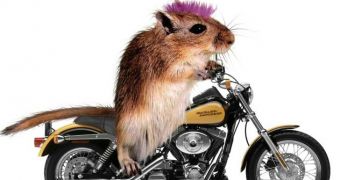Researchers with the NYU Langone Medical Center in the United States claim to have reached a better understanding of autism and that they owe this achievement to hundreds of mice sporting mohawk-like hairstyles.
In a paper published in the May 25 issue of the journal Nature, the NYU Langone Medical Center scientists detail that these quirky mice whose behavior they closely observed all had a suspect genetic mutation linked to disorders in the autism spectrum.
They further explain that the rodents ended up sporting wacky hairstyles not because someone believed that they were in dire need of a makeover and gave them mohawks, but because they kept licking each other's hair in the same direction.
In the case of these mice with mohawk-like hairstyles, the over-grooming behavior responsible for their odd appearance is said to have been caused by the lack of a gene for a protein known to the scientific community as Cntnap4.
This protein, which can be found in brain cells dubbed interneurons, influences the release of dopamine and GABA (gamma-aminobutyric acid). Of these, the first is involved in sensations of pleasure, whereas the other has been documented to influence both neural activity and muscle tone.
The scientists who worked on this research project argue that this over-grooming behavior displayed by the laboratory mice that they monitored is similar to the repetitive motions that people diagnosed with autism sometimes display.
This indicates that certain autistic motor behaviors are linked to genetic causes and biological pathways, and that it might be possible to address these by toying with the biological pathways underlying them, EurekAlert explains.
“Our study tells us that to design better tools for treating a disease like autism, you have to get to the underlying genetic roots of its dysfunctional behaviors, whether it is overgrooming in mice or repetitive motor behaviors in humans,” says researcher Dr. Fishell.
Furthermore, “There have been many candidate genes implicated in contributing to autism, but animal and human studies to identify their action have so far not led to any therapies. Our research suggests that reversing the disease's effects in signaling pathways like GABA and dopamine are potential treatment options.”
The NYU Langone Medical Center researchers wish to continue their work and hope that they will soon gain a better insight into the cellular mechanisms underlying autism. The end goal is to pin down ways to toy with these mechanisms and develop therapies based on information obtained in this manner.

 14 DAY TRIAL //
14 DAY TRIAL //